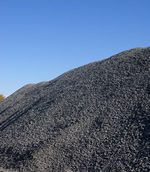In 2014, total construction aggregates production rose to an estimated 2.171 billion metric tons, representing a total value of $19.8 billion, according to the U.S. Geological Survey’s Mineral Commodity Summaries 2015 report. The estimated production volume represents more than a 7 percent increase over 2013 total production, which was a reported 2.027 billion metric tons.
An estimated 1.26 billion metric tons of crushed stone valued at more than $12.8 billion was produced by 1,550 companies operating 4,000 quarries, 91 underground mines, and 210 sales/distribution yards in 50 states. This represents a 7 percent increase over 2013.
“Demand for crushed stone was higher in 2014 because of increased demand every quarter since the second quarter of 2013, which offset the slowdown in activity that some of the principal construction markets had experienced during the previous years,” reported USGS Crushed Stone Commodity Specialist Jason Willett. “With this significantly stronger construction activity across the country in 2014, recovery in the private sector and residential construction experiencing a level of growth not seen since late 2005, consumption of construction aggregates is likely to continue to increase. It is expected that the increased consumption in 2014 from that in 2013 will reach or exceed the historical annual average of the past 50 years, which was a 2- to 4 percent increase per year. The underlying factors that would support a rise in prices of crushed stone are expected to be present in 2014, especially in and near metropolitan areas.”
Leading crushed-stone producing states were, in descending order of production, Texas, Pennsylvania, Missouri, Ohio, Florida, Illinois, Kentucky, North Carolina, Georgia and Virginia, which together accounted for more than one-half of the total crushed stone output.
Of the total domestic crushed stone produced in 2014, about 69 percent was limestone and dolomite; 14 percent, granite; 7 percent, traprock; 5 percent, miscellaneous stone; 4 percent, sandstone and quartzite; and the remaining 1 percent was divided, in descending order of tonnage, among marble, volcanic cinder and scoria, slate, shell, and calcareous marl.
It is estimated that of the 1.31 billion tons of crushed stone consumed in the United States in 2014, 46 percent was reported by use, 27 percent was reported for unspecified uses, and 27 percent of the total consumed was estimated for nonrespondents to the U.S. Geological Survey canvasses.
Of the 600 million tons reported by use, 82 percent was used as construction material, mostly for road construction and maintenance; 10 percent, for cement manufacturing; 2 percent each, for lime manufacturing and for agricultural uses; and 4 percent, for special and miscellaneous uses and products.
An estimated 911 million metric tons of construction sand and gravel valued at $7 billion produced by an estimated 4,100 companies and government agencies from about 6,600 operations in 50 states. This represents an 8 percent improvement over 2013.
“The construction sand and gravel industry remained concerned with environmental, health, permitting, safety, and zoning regulations,” reported USGS Construction Sand and Gravel Commodity Specialist Shawnna M. Bennett. “Movement of sand and gravel operations away from densely populated regions [is] expected to continue, driven by regulations and local sentiment. Resultant regional shortages of construction sand and gravel could thus result in higher-than-average price increases in industrialized and urban areas.”
Leading construction-sand-and-gravel-producing states were, in order of decreasing tonnage, Texas, California, Minnesota, Washington, Michigan, Colorado, Arizona, North Dakota, Wisconsin and Ohio, which together accounted for about 55 percent of total output.
It is estimated that about 44 percent of construction sand and gravel was used as concrete aggregates; 25 percent for road base and coverings and road stabilization; 13 percent as asphaltic concrete aggregates and other bituminous mixtures; 12 percent as construction fill; 1 percent each for concrete products, such as blocks, bricks, and pipes; plaster and gunite sands; and snow and ice control; and the remaining 3 percent for filtration, golf courses, railroad ballast, roofing granules, and other miscellaneous uses.

